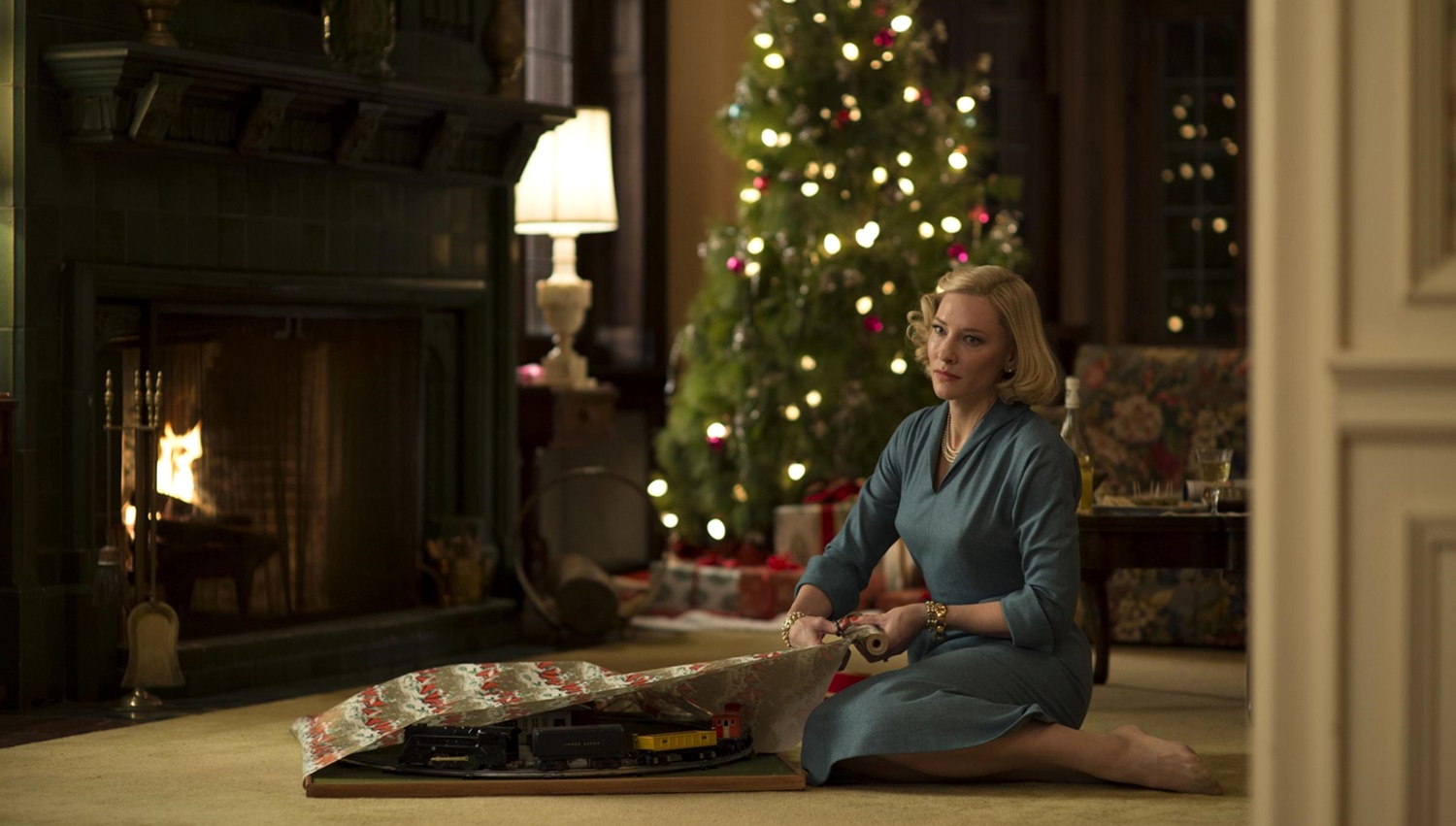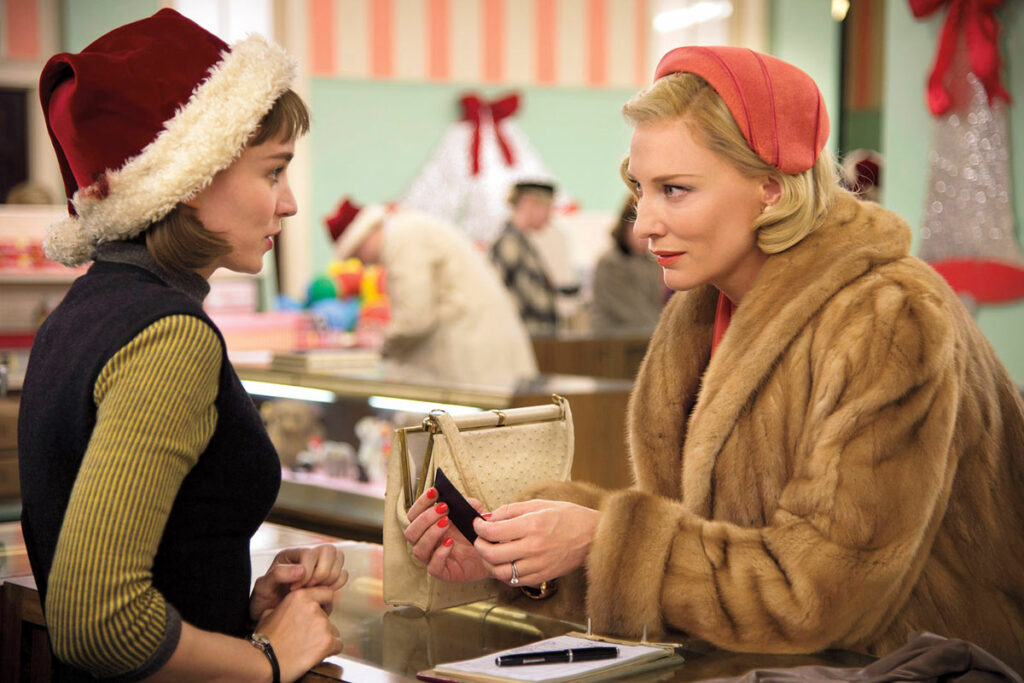By returning to the social mores of the 1950s in his new film Carol, director Todd Haynes revisits the setting for his classic tribute to the stylistic views of Douglas Sirk in Far From Heaven. But the new film is quite different in the content it explores and the world it creates.
“Manhattan in 1952, the setting for Carol, is very different from the New England of Far From Heaven, set later in the decade,” Haynes shared at a question-and-answer session at the 53rd New York Film Festival. “This soon after the end of World War II, New York City was still a distressed place, void of the color that we later associate with the location. To capture this sense of a war-torn but recovering city, I chose to shoot the film in grainy 16mm, to fully render my vision of how a tender, fragile love tries to survive in a place still frightened by itself. That’s why the film looks so muted, so still, void of the color we usually attach to the 1950s.”
For star Cate Blanchett, who explored the look of the period in The Talented Mr. Ripley, also based on a novel by Patricia Highsmith, the look of the film perfectly matches the tenor of the forbidden relationship it explores.
“Todd creates such an austere look for the film, so minimalist, that it forces us to consider the emotional layers of the environment,” Blanchett observed at the New York Film Festival. “He welcomed us into this aesthetic atmosphere that he created for the film. By shooting on location in Cincinnati, a place somewhat off the usual tour of the United States, we were able to separate ourselves from current day. And, because he gave us a two-week rehearsal period, which is unheard of in movies today, we were completely into the mood and the moment when we arrived on set to shoot. He whisked us away to a world we hardly knew and, ultimately, did not want to leave.”
Blanchett and Haynes agree the film celebrates what it takes for love to evolve, a process that is no different for two women to experience than for a man and a woman.
Blanchett and Haynes agree the film celebrates what it takes for love to evolve, a process that is no different for two women to experience than for a man and a woman. “It’s all about people and how they discover the capability to love, navigate through heartbreak, and become interested in people over objects,” said Blanchett, to which Haynes adds, “Both of these women are ill prepared for the feelings they experience. They have no example to follow, no model to copy, no cheat sheet to tell them what to do. And, despite their sophistication, they show a lack of preparedness for this kind of love that leads them to make some dangerous choices.”
One technical dimension Haynes carefully considered was how the women should carry themselves. Working again with costumer Sandy Powell, who also created the looks for Far From Heaven, Haynes carefully considered the how the ladies should walk, stand and use their voices, paying close attention to “where the voice should sit in the body”. As he explains, “that world is so far away from how we live today, and we could not make artificial attempts to contemporize the story, that would weaken the story. So every detail had to capture the essence of how these women lived and tried to learn how to love.”
As Haynes observes, “this is a movie about people who fall in love, who dare to travel unchartered emotional territory, their desires, their restraints, their hopes that avoid traditional views of destiny and change.”
Thanks to Haynes, Blanchett and Rooney Mara, Carol becomes a must-see film in a year filled with special movies. “By staying true to the time period – a moment in our history before people became so comfortable spewing their emotions – these woman remind us how much people can say when they can’t say a word,” Haynes says.
For Texas Art and Film, this is Mark Schumann. See you at the movies.


